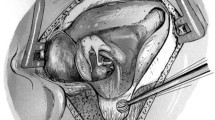Abstract
Cholesteatomas can originate at various sites on the temporal bone, which houses the middle ear among other structures. Distinction is made between three types of cholesteatoma: auditory canal, middle ear, and petrous apex. The most frequent type, middle ear cholesteatoma, can be subdivided into a congenital and an acquired form. A number of theories on the aetiology of this aggressive form of middle ear inflammation have been put forward and, in some cases, dismissed again.
We investigated the role of bacterial infection as a trigger in the development of cholesteatomas. For this purpose, we used modern molecular, cellular biological and immunohistochemical approaches on human biopsy material, since it has not been possible to date to establish an animal model resembling the human cholesteatoma. We report the different theories on the origin and development of cholesteatomas, as well as the findings to support each of these hypotheses. Many investigations into hyperproliferation, the various morphological sections of cholesteatomas, as well as into the expression of different proteins in these areas complete the presentation of our work. Finally, we emphasize that there is evidence to indicate that a weakness in the innate antimicrobial defense system of the human external ear skin may make a decisive contribution in the development cholesteatomas.





Similar content being viewed by others
References
Müller, J. (1838): Über den feineren Bau und die Formen der krankhaften Geschwülste. Berlin: G. Reimer, 50.
Bujia, J., Sudhoff, H., Holly, A., Hildmann, H. und Kastenbauer, E. (1996): Immunohistochemical detection of proliferating cell nuclear antigen in middle ear cholesteatoma. Eur Arch Otorhinolaryngol. 253:21–4.
Sudhoff, H., Dazert, S., Gonzales, A.M., Borkowski, G., Park, S. Y., Baird, A., Hildmann, H. und Ryan, A.F. (2000): Angiogenesis and angiogenic growth factors in middle ear cholesteatoma. Am. J. Otol. 21:793–8.
Michaels, L. (1988): Origin of congenital cholesteatoma from a normally occurring epidermoid rest in the developing middle ear. Int. J. Pediatric Otolaryngol.15:51–65.
Olszewska, E., Wagner, M., Bernal-Sprekelsen, M., Ebmeyer, J., Dazert, S., Hildmann, H. und Sudhoff,H. (2005): Etiopathogenesis of cholesteatoma. Eur Arch Otorhinolaryngol.262:731–6.
Sudhoff, H., Bujía, J., Fisseler-Eckhoff, A., Holly, A., Schulz-Flake, C. und Hildmann, H. (1995): Expression of a cell-cycle-associated nuclear antigen (MIB 1) in cholesteatoma and auditory meatal skin. Laryngoscope.105:1227–31
Hildemann H, Sudhoff H (2006) Middle ear surgery. Springer, Berlin Heidelberg New York
Conflict of interests
None declared.
A complete list of references can be requested from the authors.
Author information
Authors and Affiliations
Corresponding authors
Rights and permissions
About this article
Cite this article
Fränzer, JT., Sudhoff, H. Middle ear cholesteatoma. e-Neuroforum 1, 1–8 (2010). https://doi.org/10.1007/s13295-010-0001-2
Published:
Issue Date:
DOI: https://doi.org/10.1007/s13295-010-0001-2



